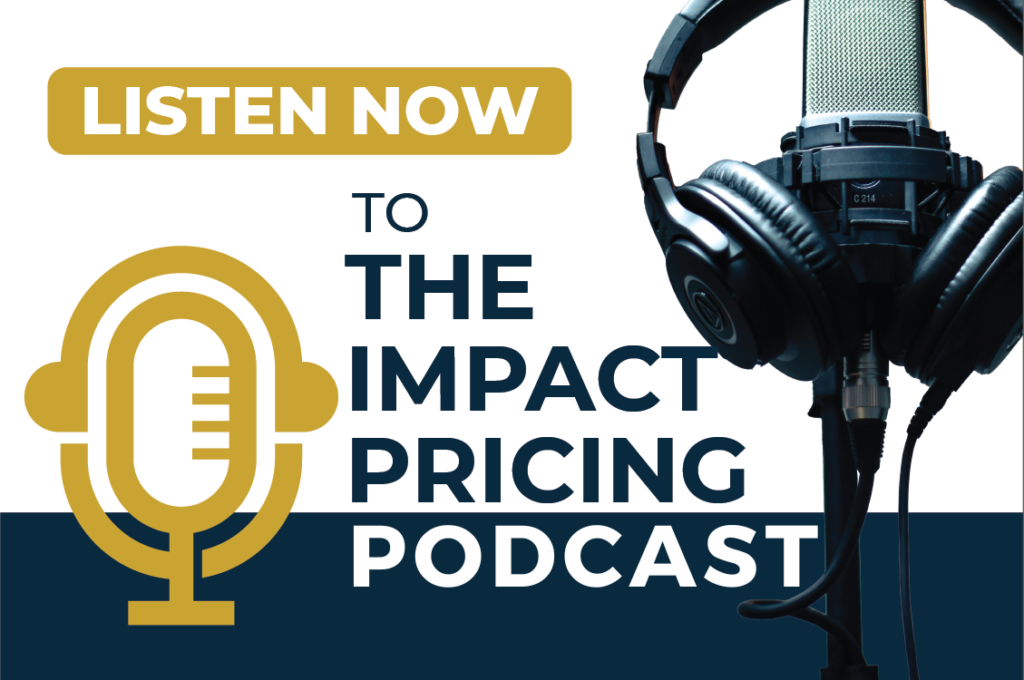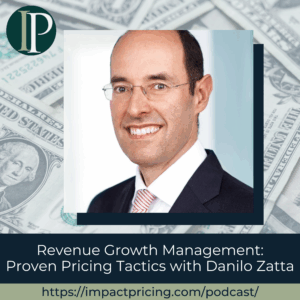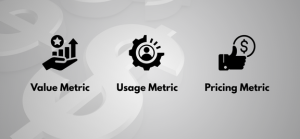Amy Konary has more than 20 years of experience advising companies on subscription business strategies.
She is the founder and chair of The Subscribed Institute presented by Zuora, a think tank for the subscription economy. Through The Subscribed Institute, Amy brings together a community of business executives, thought leaders, and industry experts at a series of Executive Summits and events, and generates research and industry benchmarks on subscription transformation topics. Amy also advises Zuora customers on subscription business strategy development, execution, and maturity.
Podcast: Play in new window | Download
Why you have to check out today’s podcast:
- Find out the basic differences between SaaS, subscription and traditional perpetual licenses
- Learn about subscription pricing decision and how to set-up the revenue buckets for acquisition, retention, and monetization
- Discover why it is important that your pricing and packaging be aligned to the buyer journey
“When you’re selling a subscription, you have to take people on a journey.”
– Amy Konary
Increase Your Pricing Knowledge: Become a Champions of Value INSIDER!
To sign up go to insider.championsofvalue.com.
Topics Covered:
02:14 – How she got started in Pricing
04:35 – Pricing and packaging in traditional businesses as compared with subscriptions
08:11 – What to focus on in subscriptions and the challenges that go with subscriptions
12:54 – Her thoughts on this particular difference between a traditional business and subscriptions
15:04 – Why consumption pricing isn’t the most viable option in subscription pricing
15:54 – What is Subscribed Institute and what does it do
19:07 – Her best Pricing advice that would greatly impact your business
Key Takeaways:
“You’re selling relationships when you’re selling subscriptions.” – Amy Konary
“All of the sorts of principles about how people make decisions and the balance of simplicity with flexibility and the paradox of choice, all these sorts of behavioral economic concepts seemed very, very strong when it comes to subscription pricing.” – Amy Konary
“In subscription, rather than selling all the value upfront, you have to make sure they can see value really quickly and you’ll also have to give them a path forward.” – Amy Konary
“For a new business, you absolutely have to focus on new subscriber acquisition and that might dictate or it does dictate how you price and package.” – Amy Konary
“In subscription, you can’t monetize unless you have that relationship, have that subscriber.” – Amy Konary
Resources:
Connect With Amy Konary:
Connect with Mark Stiving:
- Email: [email protected]
Full Interview Transcript
(Note: This transcript was created using Temi, an AI transcription service. Please forgive any transcription or grammatical errors. We probably sounded better in real life.)
Mark Stiving: Hi, everybody, we recorded this podcast and we’re publishing it as well, during the coronavirus pandemic.
I’m personally tired of studying and talking about it and listening about it.
Instead, I really want to focus on something that makes me happy. And that’s pricing.
So I’m glad that you’re with me. But I do have a couple of requests before we jump into the episode. Number one, would you please stay safe. Wash your hands often try really, really hard not to transmit this to anybody else.
And number two, do something nice for somebody who’s less fortunate or in a tough situation. I’ve heard many different ideas. But the one I like the best that’s pretty consistent with what we tend to talk about here is if you have restaurants in town that you really like you’d like to frequent. Go buy gift cards. You’re essentially loaning them money, and boy, could they use that loan right now. And then cash or gift cards in later after this. pandemic is over with.
So hopefully you’ll do those two things. Now it’s time for the episode.
Amy Konary: When you’re selling a subscription, you have to take people on a journey.
Mark Stiving: Welcome to Impact Pricing, the podcast where we discuss pricing, value, and once again, the transformational relationship between them. I’m Mark Stiving.
Today, our guest is Amy Konary. Here are three things you want to know about Amy before we start. She spent 19 years at IDC responsible for digital business models. This is before they were even popular. She’s been two and a half years now at Zuora helping companies through their business transformations and she’s the founding chair of the Subscribed Institute. I cannot wait to hear about that. Welcome, Amy!
Amy Konary: Thank you so much, Mark. I’m happy to be here.
Mark Stiving : Oh great! How did you end up in Pricing?
Amy Konary: Just the price is right. Count as a……..
Mark Stiving: Were you good at that?
Amy Konary: I was really good at that. You know what, I always was fascinated by was the psychology of pricing and so I’ve always been interested in it, but the way that I got involved in pricing from a career perspective was when I was at IDC, I launched and ran the practice on software as a service and my primary role was to sort of seize the opportunity, so understand, you know, how the market was developing. But in doing that work, I was talking to a lot of companies that were trying to build SaaS businesses and they had a lot of questions on pricing and packaging that no one could answer at the time because these were brand new businesses and, you know, in the software industry, the way that software had always been sold as a perpetual license, et cetera, it’s very different from the way that a subscription business might want to go to market and price and package.
I started to talk with companies about what they were doing and how it was different and saw a real opportunity to build out really a consulting practice on pricing and packaging specifically for software businesses that were trying to grow subscription models. And so I launched a practice in 2004 on that and ran that through to set 2017 or so and worked with almost every technology provider, software, hardware, et cetera, that was trying to build and as a service business model at that time was probably my customer.
So I saw a lot of really fascinating pricing and packaging challenges and issues and got really interested in behavioral economics at the time. And still am, in part because there’s, you know, you’re selling relationships when you’re selling subscriptions. And so all of the sort of principles about how people make decisions and the balance of simplicity with flexibility and the paradox of choice, all these sort of behavioral economic concepts seemed very, very strong when it comes to subscription pricing. So that’s really been, I guess, a key focus of mine for the last decade or more.
And I continue to see lots of really interesting pricing and packaging challenges that companies who are building subscription models face across industries. And so the topics I discussed that’s a really key one.
Mark Stiving : So I’ve been in pricing for over 20 years, but I probably came to subscriptions maybe about two years ago and started looking at it and oh my gosh, my eyes had been so wide opened, widely opened, open widely because it’s such a different thing.
And then you take what you’ve learned in subscriptions and you say, well, would this have worked in traditional business? And so the thing that makes me want to bring this up is you talked a lot about pricing and packaging and in traditional business we talk a little bit about good, better, best, but it’s really, how do I put a price on a product once you get to subscriptions, that’s like an integral part of the decision process that you make.
Amy Konary: Absolutely! I think one of the key shifts that I saw, you know I did pricing and packaging work in software with companies that weren’t selling subscriptions and I think they built those models in the traditional sense, you know, in the software you’ve never really been able to do cost-plus pricing because the marginal cost of additional products, it doesn’t make sense, but when you’re selling a perpetual license product, you’ve got to think of delivering all the value upfront. And people would do six, eight, ten, twelve months of studies figuring out what the right price would be.
They’d said it, they’d publish it, they knew there was discounting and things in the background, but they wouldn’t come and do another big project like that for a long time. Whereas in subscription, and we sell this to our customers all the time at Zuora, typically the first price that you come out with, it’s going to be the wrong one. It is and so the process is a lot more iterative. You’re almost doing your research with a price point out in the market as opposed to doing, you know, the six, twelve-month research project. Then coming up with the perfect price and getting it out there and keeping it that way.
So you have to really be open to the change in process with the price point itself. We have, customers will tell you how much they value and what they value and so you have to always be listening. The other key difference and I mentioned packaging is when you’re selling a subscription, you have to take people on a journey. So rather than selling all the value upfront, you have to make sure that they can see value really quickly and you’ll also have to give them a path forward. Okay, and so I think good, better and best is one way to look at it.
Another way to look at it is through the use of trials and how that comes into play. The use of contracts and contract terms, monthly versus annual. There’s just a lot of different components as trade-offs. You want to acquire people, subscribers, you want to retain subscribers, but you also need to monetize subscribers. And it’s just really difficult to do all three of those things at the same time.
It’s a lot of segmentation that comes into play, a lot of packaging expertise that comes into play. And I think also the openness to agility and iteration, which, which may not be something that an existing product organization might have as part of their core competency to begin with if they’re new to subscription.
Mark Stiving: Yeah. Oh my gosh, I’m loving this conversation. I want to talk to you forever. So you just brought up what I call the three revenue buckets, right? And so you called it acquisition, retention, and monetization. I often hear of the expansion of the set of monetization and what I call it is win, keep and grow. You’ve got to win. Customers, keep customers, grow customers. And so I just find that a fascinating thing that most companies don’t even think about. Right? So you get to the subscription,
Amy Konary: Absolutely. And we, a lot of times we talk about that, but we also contrast the way that you used to grow and how, you know, in the past it was units or transactions, having more of those and then increasing your margin on those transactions and that was how you grow. But you’re right, you know, it’s also three things in subscription, but it’s very different. And you know, a lot of times we’ll get asked the question, well, what should we focus on? Should we focus on acquiring new subscribers or should we focus on retaining them? Or because it is very hard to do all three of those things at once. And so the answer is often it depends where you are in your business. You know, for a new subscription business, you absolutely have to focus on new subscriber acquisition and that might dictate or it does dictate how you price and package. Do you want it to be really simple, easy to see how you’re going to see value really quickly, very transparent. You want to remove the risk that the customer might perceive, right?
Mark Stiving: Get more people in your network.
Amy Konary: Absolutely right. You can’t monetize unless you have that relationship, have that subscriber. But then what tends to happen is a company that does really a good job of acquisition will reach a point at some point where they say, wow, we have people leaving us at the same rate or sometimes even faster than they’re coming in, or we see an opportunity. People are loving what we’re doing. But this one size fits all approach. You know, it’s difficult. There are people that want to dig in further with us and then there are people that were, maybe they can’t recognize all the value because they’re not able to use all the functionality in the terms of software or them, you know, they don’t want that level of service, whatever that might be. So that’s when we start to see companies do more of the segmentation and get into tiering, pricing as an example,
[Insider Advertisement]:
Time out for a quick ad.
Our goal at Impact Pricing is to help you become a champion of pricing and value.
This will undoubtedly increase your impact at your company. It’ll help you get promoted and make your company more profitable.
And now we have an unbelievable offer to push you even further down that path. We just released our new insider program where you get access to all of our current and future courses.
If you just take the courses we currently have released that’s over $2,000 in value. The good news is we release courses that are really faster than one every two months. That’s faster than anybody’s been able to take them. At least so far.
You get access to everything for the low price of just $100 per month. That’s a small portion of the raise that may come with your next promotion.
To make this offer even more irresistible. We offer you your first month for only $5. Try a few courses, see what you learned that’s valuable. We are confident you’re going to want to stick around.
Oh, and did I mentioned you get access to office hours? One hour a week I get on zoom and answer questions from our insiders. Considering I charge $1,000 for one-hour pricing consultation that makes this a no brainer.
Go to insider.championsofvalue.com. To sign up to take advantage of our special $5 offer. Use the promo code ‘INSIDENOW’.
This special offer will end at the end of April 2020. Join me and your colleagues as a Champion of Value Insider. I’ll see you on the inside
Amy Konary: And I think the other thing that’s really different in a subscription is the notion that you have this ongoing relationship, I think it’s particularly relevant in today’s times that you might want to put a pause button on, or you might want to decrease the level of relationship that you have. And as a provider, it’s really important to be able to allow people to put things on hold but keep that relationship rather than simply canceling that relationship. So that’s another element. I think, you know, maybe it falls into the pricing packaging world. Maybe it’s more contract terms, but something that subscription businesses have to think about just because it is an ongoing relationship that a product-oriented business just might not be.
Mark Stiving: Yeah. So, I just want to hear your thoughts on this. But one of my favorite things about subscriptions, when I think about the difference between the traditional business and subscription business. In my traditional business, I want you to pay me for my product and I actually don’t care if you never used it.
Amy Konary: Yup.
Mark Stiving : In a subscription business, I care a ton if you’re using my products because if you’re not using it, you’re not going to keep paying.
Amy Konary: Absolutely. Yeah. And it’s interesting, there are some, sometimes I’ll attend pricing discussions about subscription and you hear the term let sleeping dogs lie. So you may not, you may have some subscribers or people that are subscribing that aren’t using the subscription. Maybe just want to leave them alone and not remind them that they’re paying you every month.
And I actually disagree with that. Our CEO of Zuora calls those zombie subscribers, right? These people are subscribing, but they’re not seeing any benefit from your service. They’re not getting any value. And those actually aren’t people that you want. You know you want to be providing value. You want people on board who are seeing the value. And so one of the ways that you can kind of determine that is by tracking and understanding usage.
And there are lots of different ways to kind of measure and quantify that. And of course, we see companies offering usage and consumption-based pricing. And we’ve done some studies at Zuora, you know, because we’re running so many subscription companies on our system, we’re able to look at an anonymous and aggregated basis across the companies that we have running businesses and look at different ways that they price and package and then the impact on growth and retention. And so we find that those companies that offer usage-based or consumption-based pricing as part of their overall pricing mix grow faster than those that don’t or we’ve actually found a sweet spot.
You can be too flexible and offer too much of your pricing associated with consumption. So as a former analyst and someone who loves spending a lot of time with data, I’ve been fascinated digging into what the sort of our subscription economy benchmarks have been able to tell us about different types of pricing for subscription businesses. And clearly consumption pricing is an important one to have as part of your portfolio if you’re a subscription company.
Mark Stiving: So why do you think a hundred percent consumption isn’t the right answer, isn’t the optimal?
Amy Konary: My take on that is that it is difficult to predict costs if you’re a customer. And it is difficult if you’re a provider to predict revenue because you don’t know what that consumption could be. And so yeah, from working with companies over the years, building out consumption pricing, there’s always some baseline of consumption that you’d offer in a tier and then you’d have that overage model. And so that overage model is essentially what we see when we see consumption being a certain percentage of your approach. And I think it does come back to that wanting to have that level of predictability, the ability to predict and project what you’re going to pay. And then if you’re a provider, what kind of revenue you’ll receive.
Mark Stiving : Yeah. Excellent. This has been fascinating so far, but I really want to know, tell me about the Subscribed Institute. What is it? What do you do?
Amy Konary: Yeah, absolutely. So as you probably see all the time, with the individuals you interact with and the people that are listening to your podcast, the art of becoming a successful subscription business, pricing and packaging. Is it a balance of art and science. And, I have also found over the years that although I think we’re all very familiar with subscription models, most of our businesses are rooted in the traditional product economy. Even if we’re a service business, typically the service revolves around some sort of a product deliverable.
And so we don’t all inherently have a subscription and subscription economy in our wheelhouse. And so the objective of the Subscribed Institute is to be, it’s a think tank for executives that are running subscription businesses and who are really looking for a peer network of other executives running subscription businesses as well as benchmarks and research. So I mentioned some of the benchmark data that we have on packaging and pricing. For example. We’ve also created frameworks and models and maturity models, playbooks for different industries and we hold live events as well where we connect people with one another.
It’s really an opportunity for people to help provide guidance and advice to others on how to run a subscription business, how to evolve your business and to, for Zuora, as a software company that offers a platform that enables companies to monetize their subscription relationships. We want to make sure we’re helping people remove the obstacles that they might face in running a healthy subscription business. And in many cases, those are business obstacles. So we have around 800 executives from 500 or so companies that are part of the think tank. We hold events every month, up until recently, these were primarily live events, but we’re obviously re-imagining how we engage in terms of virtual events.
The topics include things like culture. What does the culture of a subscription business look like? Change management, how can you, you know, look at the various parts of your business that need to change and adapt? What’s the best way for pushing those forward, channel? How do you get your channel engaged in selling subscriptions that’s a go-to-market? Topics are always really important. And of interest to the Institute. I think at the end of the day, we’re a support group for the industry. I think a lot of businesses, you know, subscription businesses are very resilient.
They’ve got that recurring revenue going forward. And so that’s something that certainly helps in times of crisis, but I think we’re all grappling with some of the same types of issues and topics. And so being able to bring people together and giving them a forum for talking that through, I think is going to be the biggest value that we’ll be able to provide over the next few weeks and months, for sure.
Mark Stiving: Yeah. That sounds excellent. We are going to have to wrap this up, but let me ask the final question. What’s one piece of pricing advice that you would give our listeners that you think could have a big impact on their business?
Amy Konary: I would read the book Subscribed. It’s a bit of a shameless plug, but I didn’t write it. So do you have it in your bookshelf there? I can see that, yeah. I mean, silver lining, we probably all have some time for reading these days. It’s a great story about a business and ultimately about the industry and I highly recommend it.
Mark Stiving: Yeah, I think that was the first subscription book I read and it was fabulous. I mean, I truly started to open my eyes to what this whole subscription road was about. So, absolutely fascinating. Thank you. Amy, thank you so much for your time today. If anybody wants to contact you, how can they do that?
Amy Konary: I think LinkedIn is always great for me.
Mark Stiving: Okay. I will spell your name in the show notes so people could spell it. But it’s not the way I would have spelled it, just hearing the word sets. So, alright, episode 63 all done.
Let’s see, what was my favorite part of the podcast? I think it was hearing Amy talk about how integral packaging is to pricing in the subscription world and what was your favorite part? Please let us know in the comments or wherever you download it and listen while you’re at it, would you please give us a five-star review?
These are hugely valuable to us and don’t forget we have a community at community.championsofvalue.com, You can go there and participate in all of the publications that we do. Do you have any questions or comments about the podcast or about pricing in general? Feel free to email me, [email protected].
Now, go make an impact!
Tags: Accelerate Your Subscription Business, ask a pricing expert, pricing metrics, pricing strategy
















